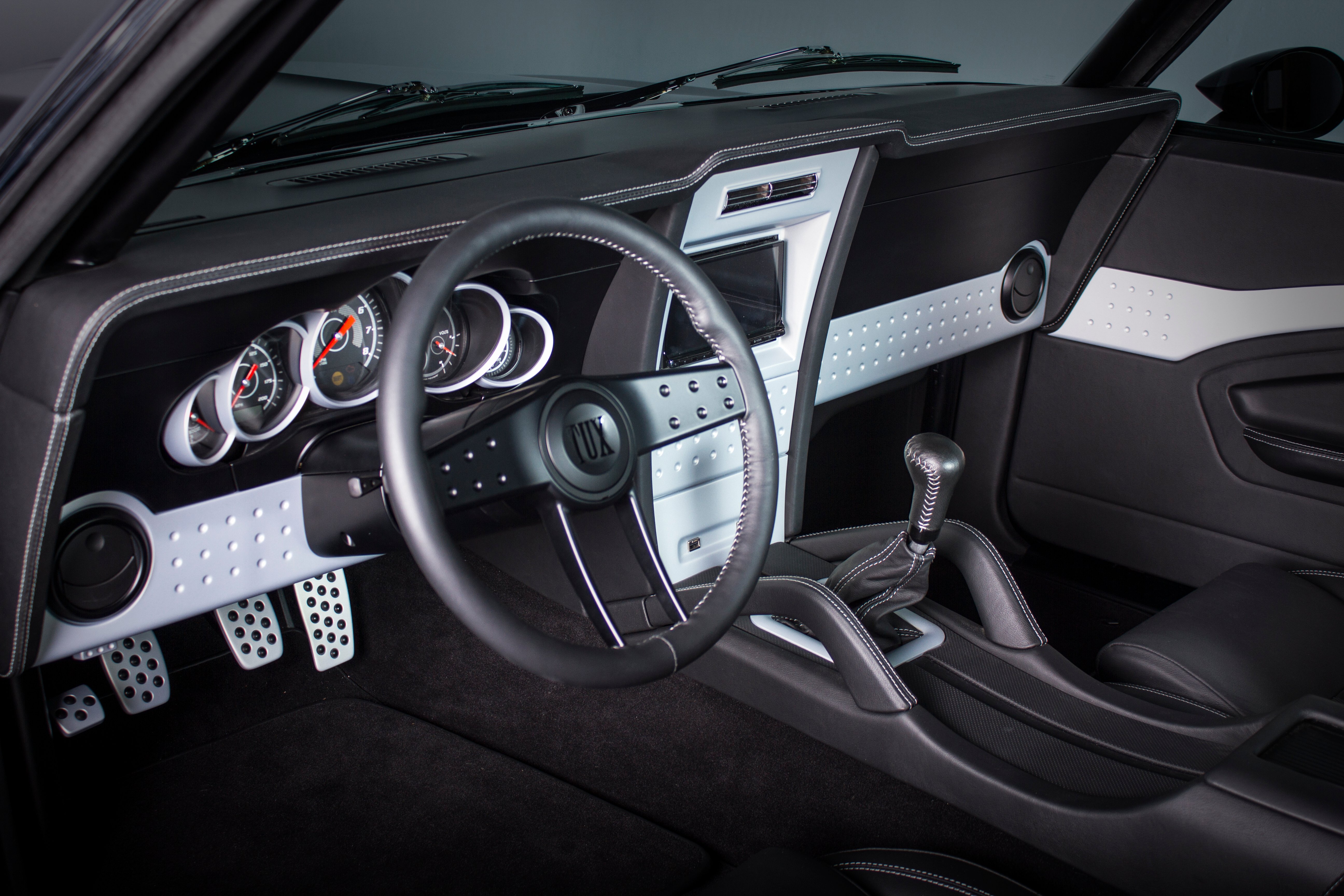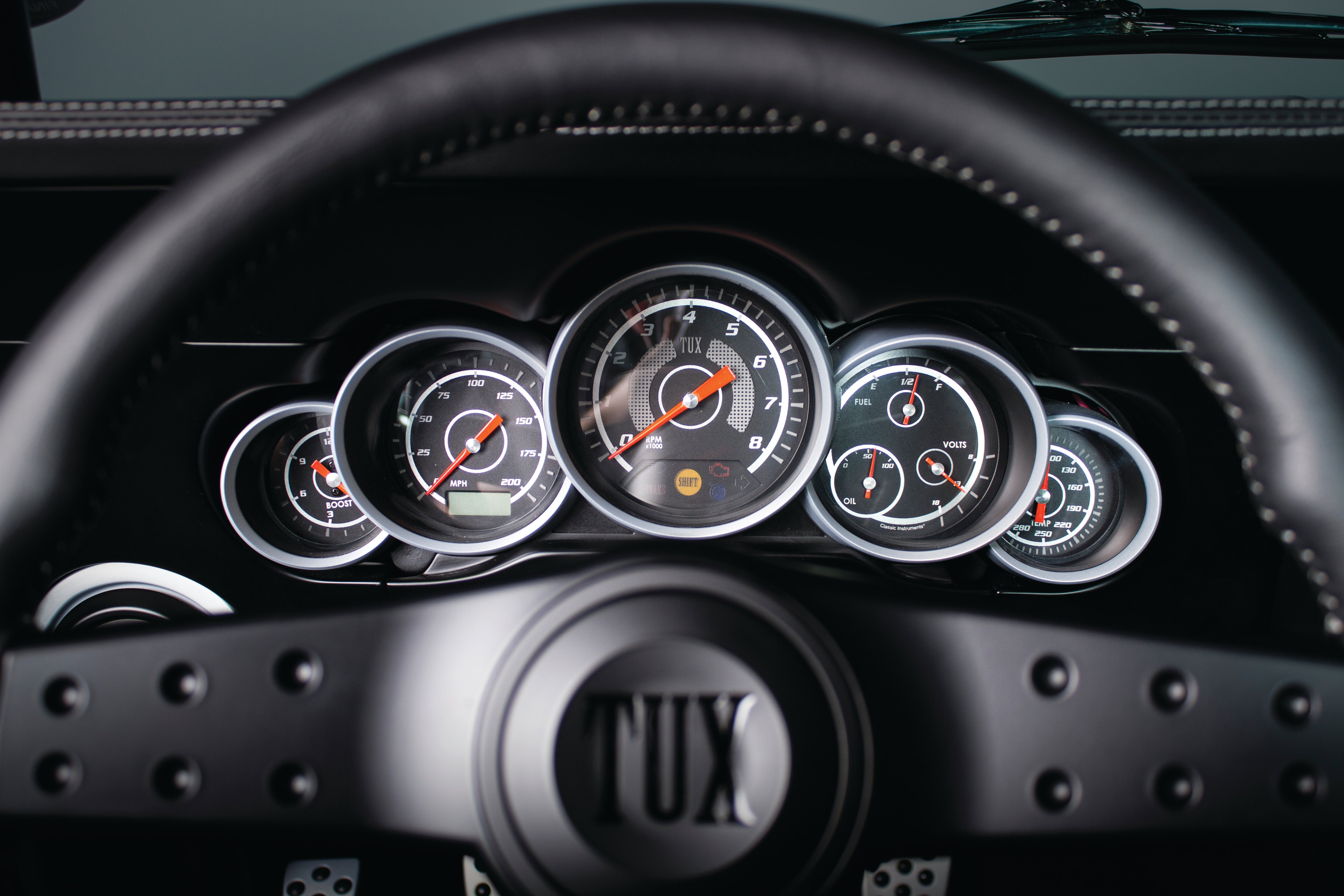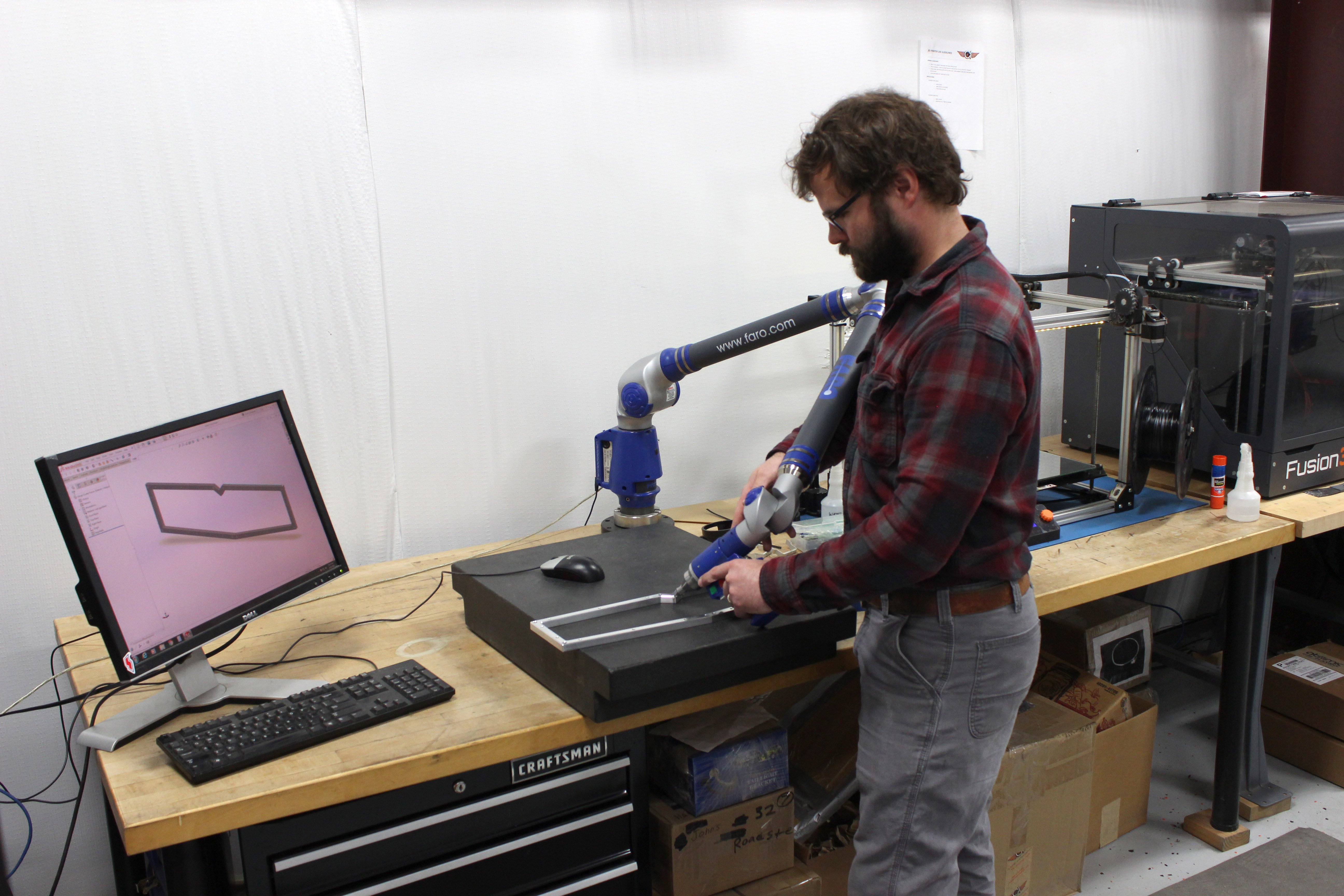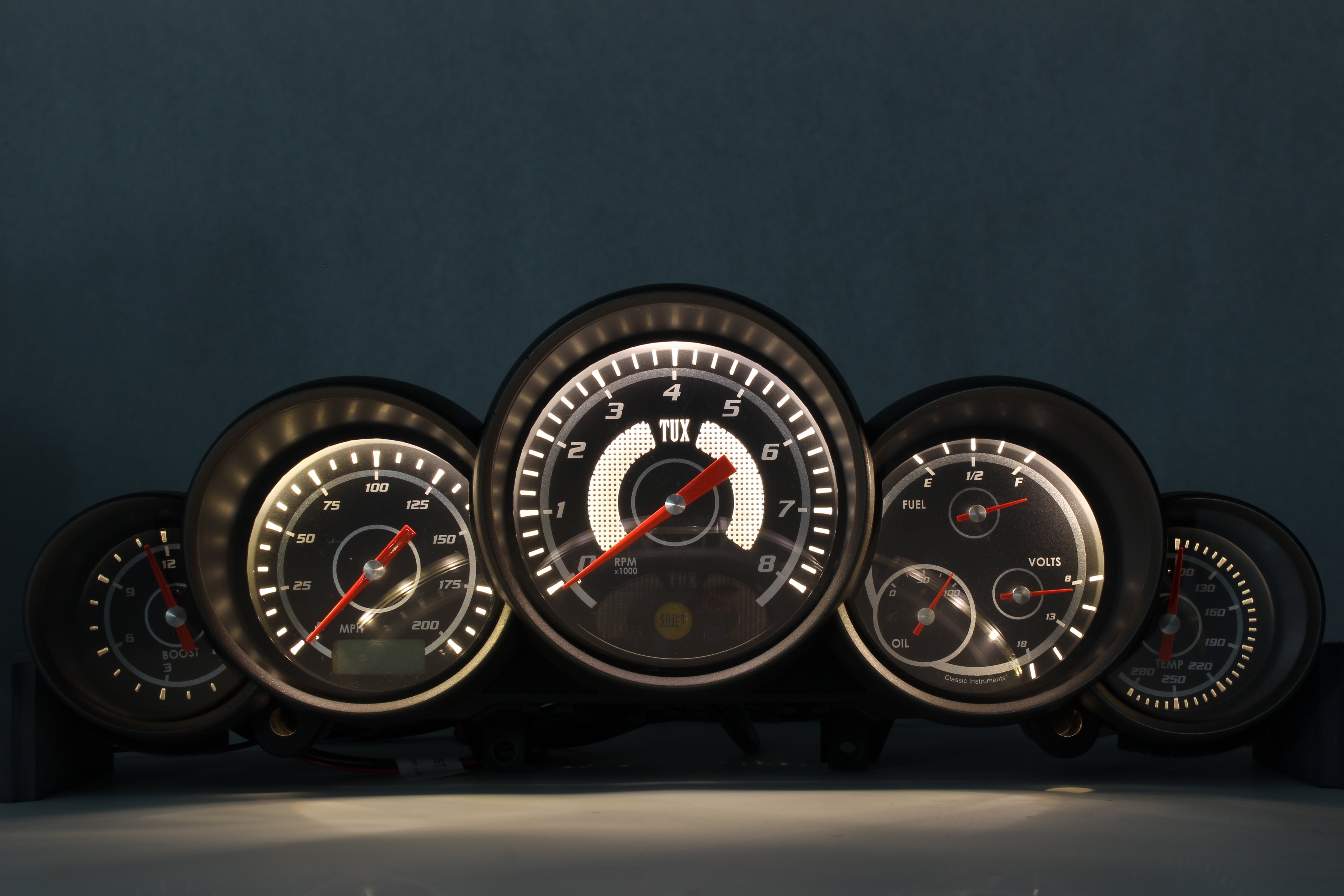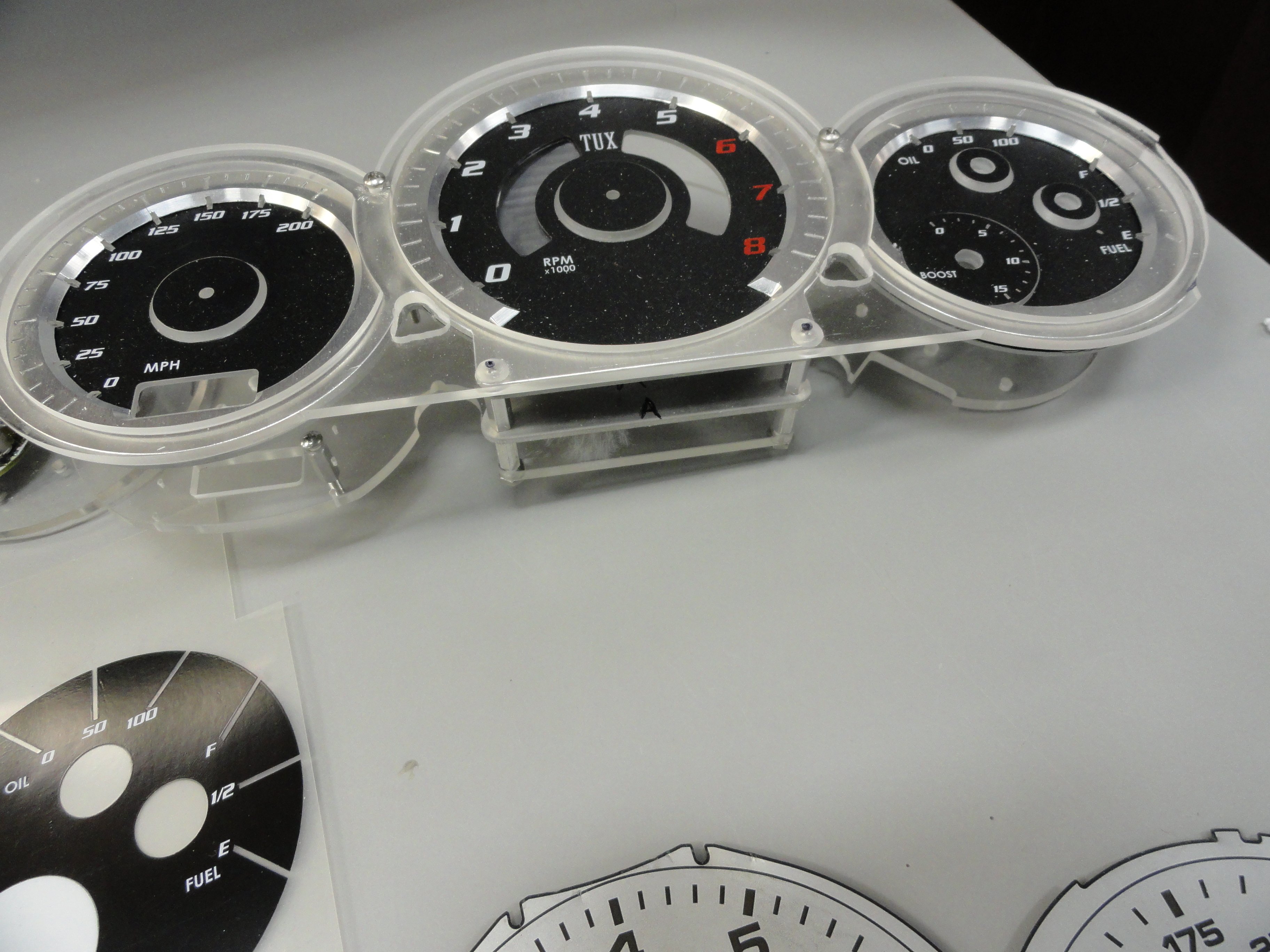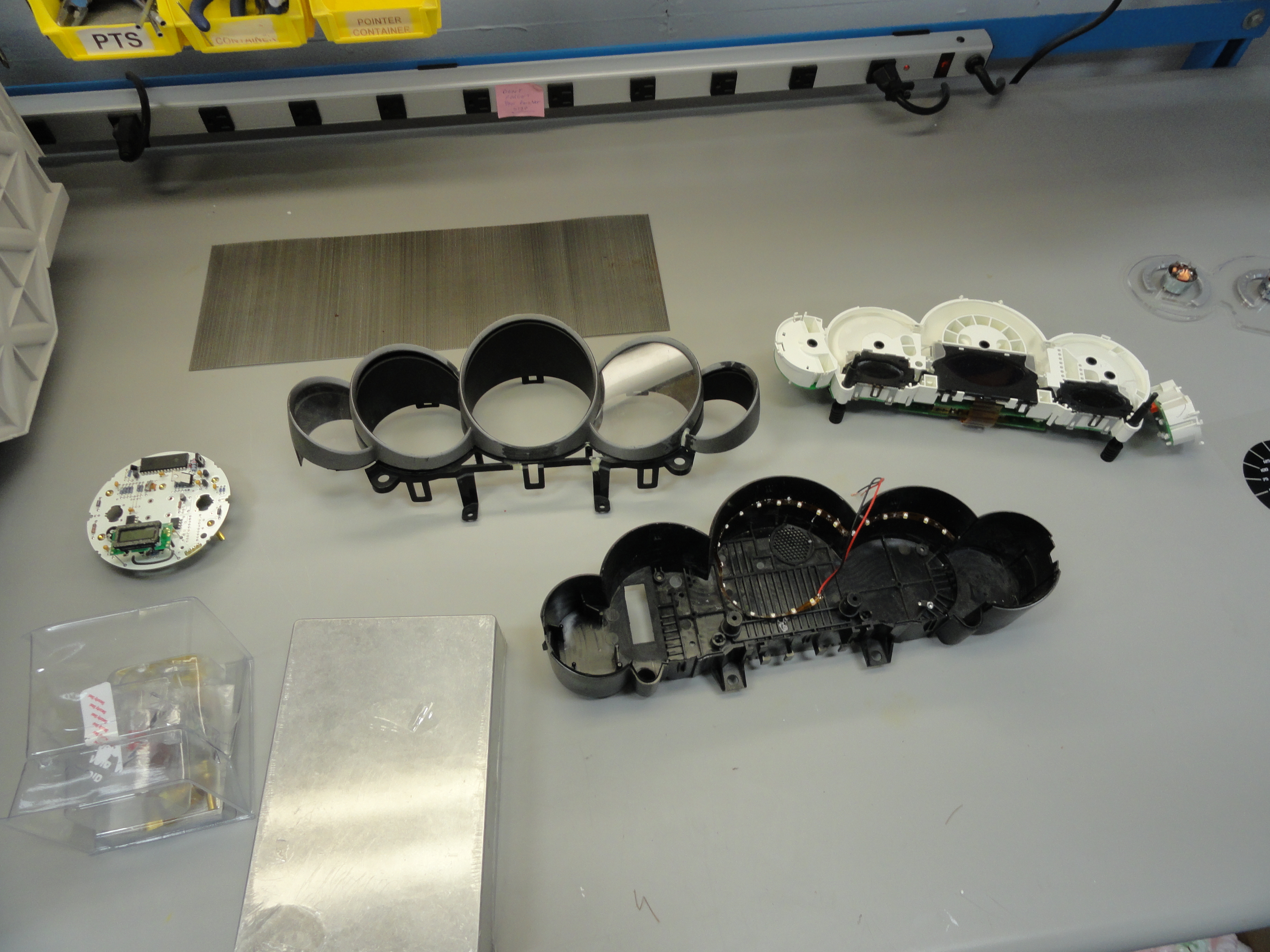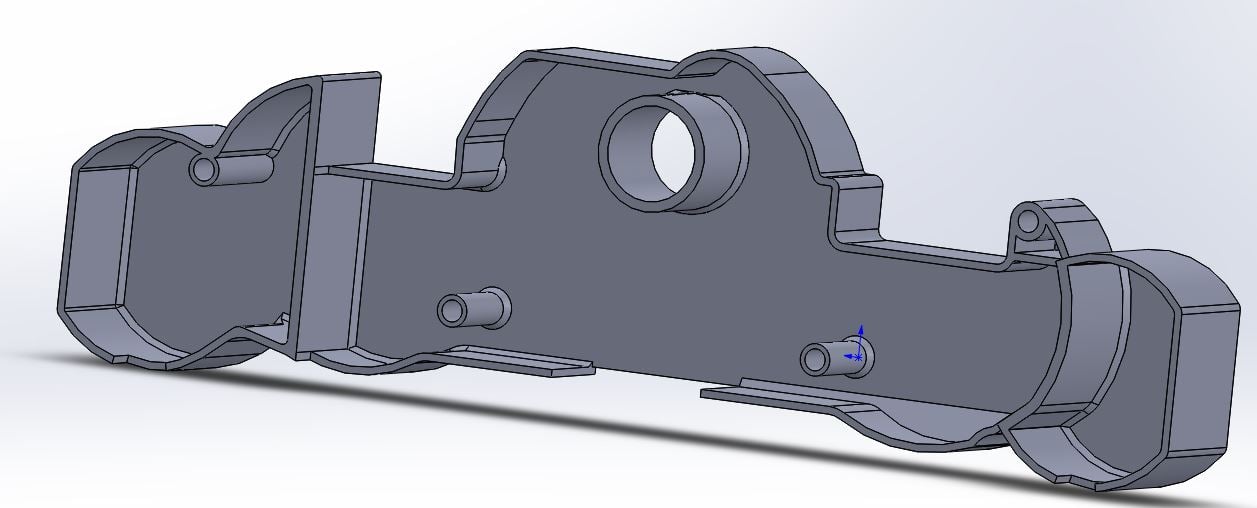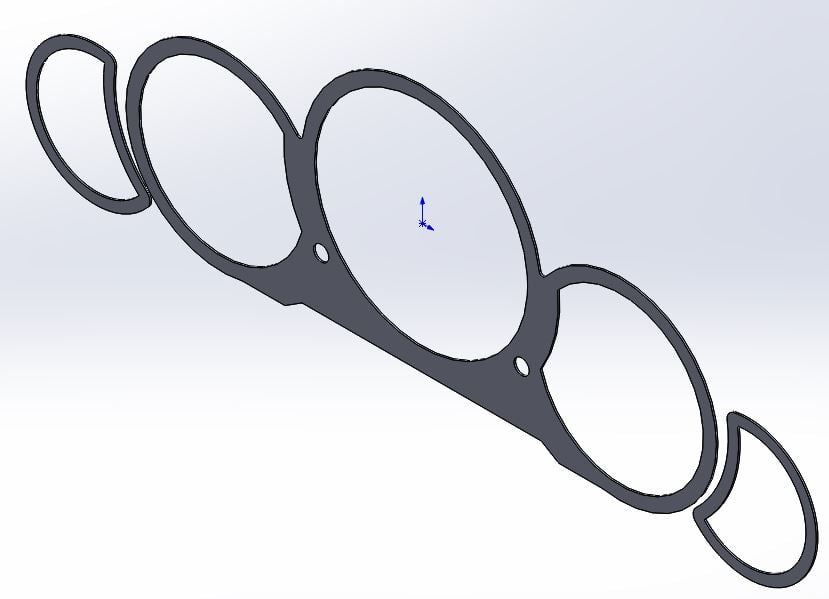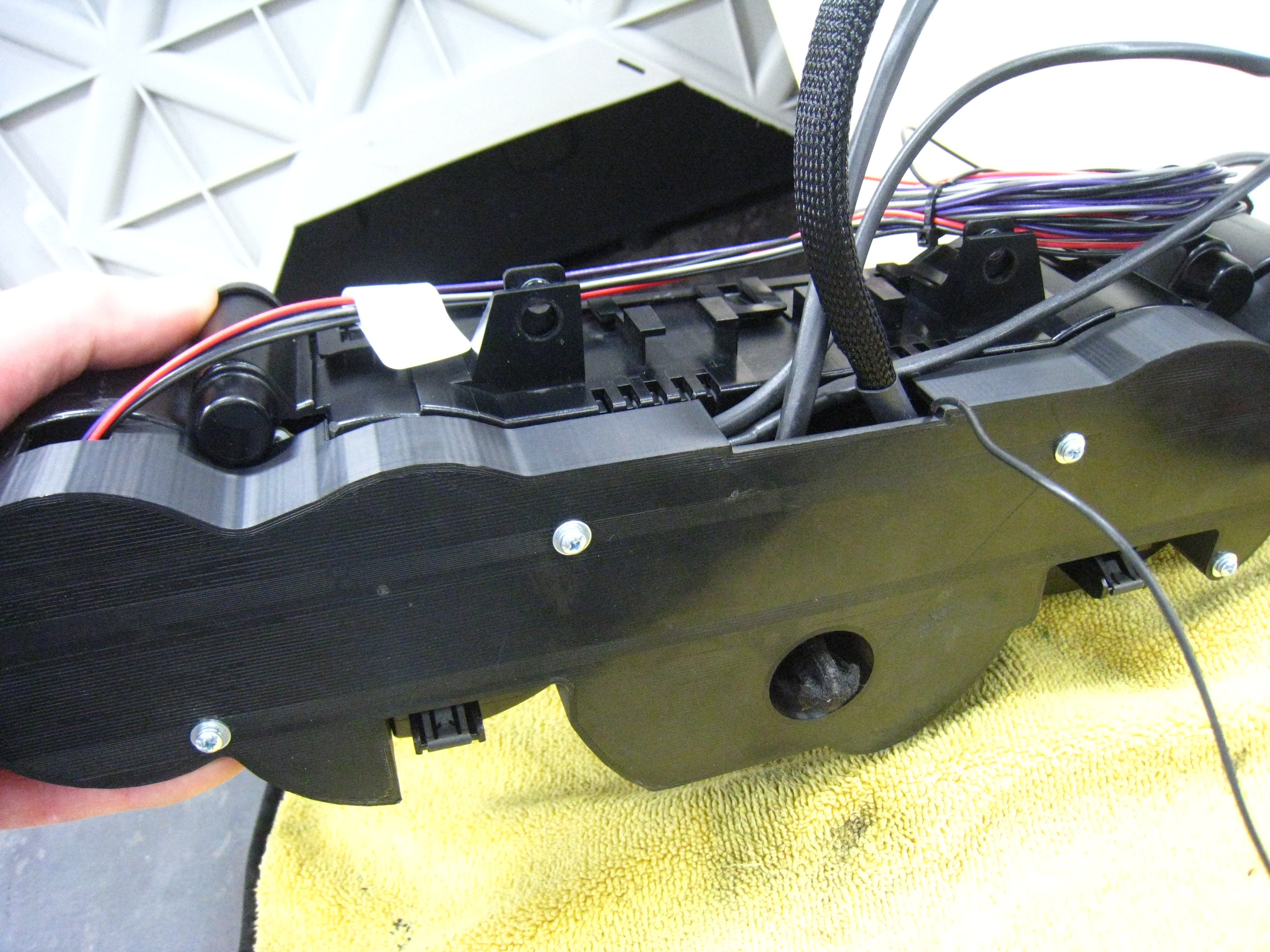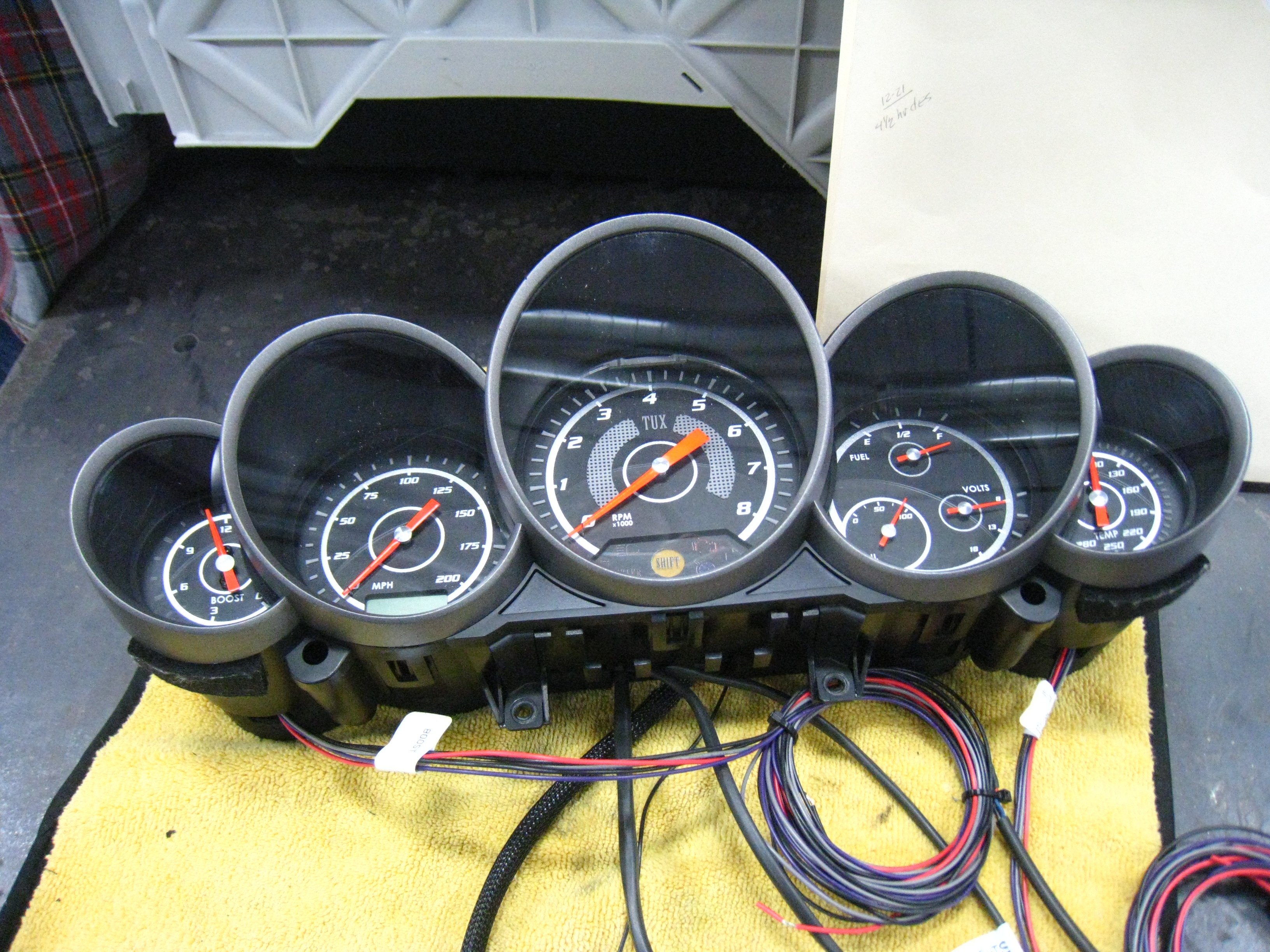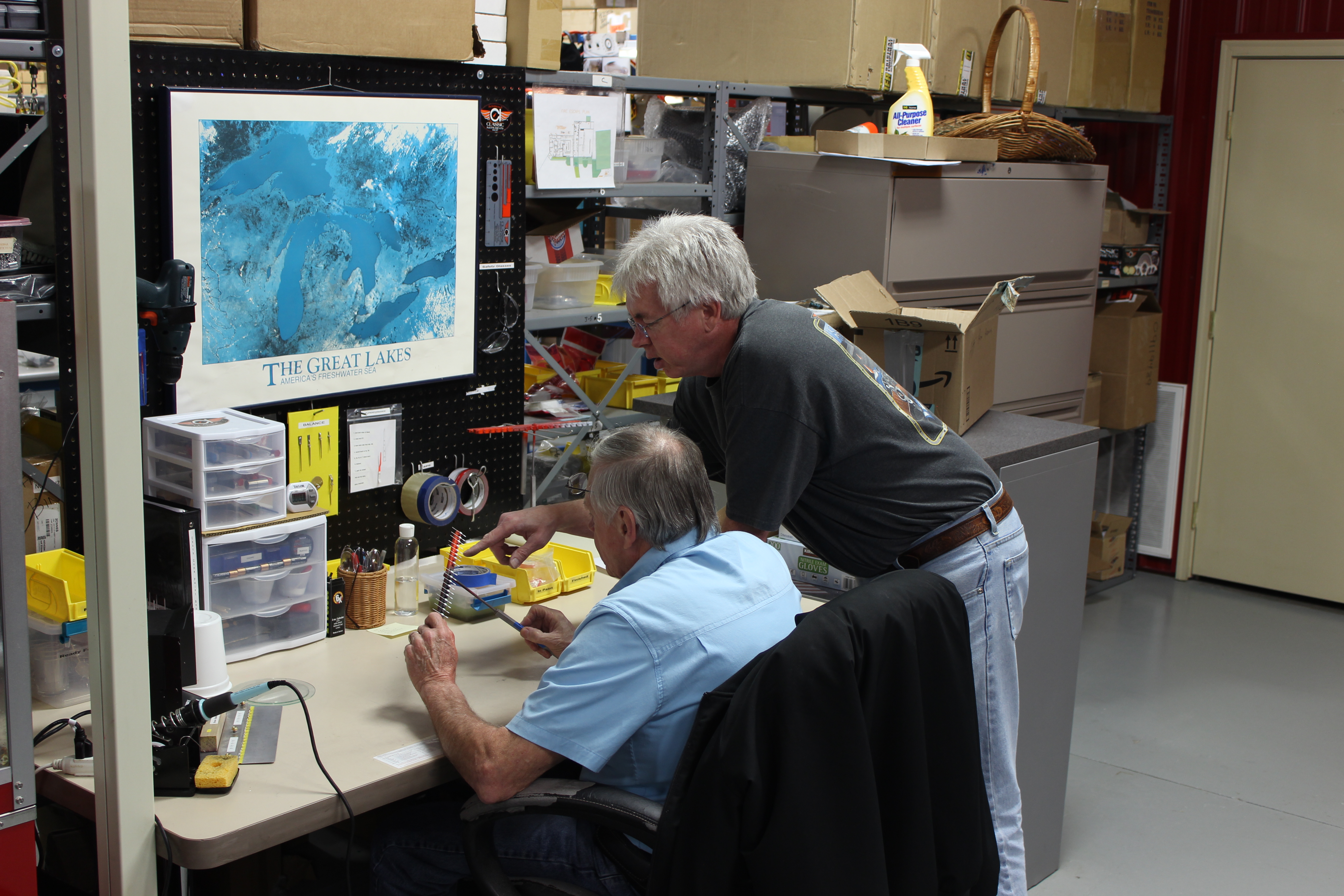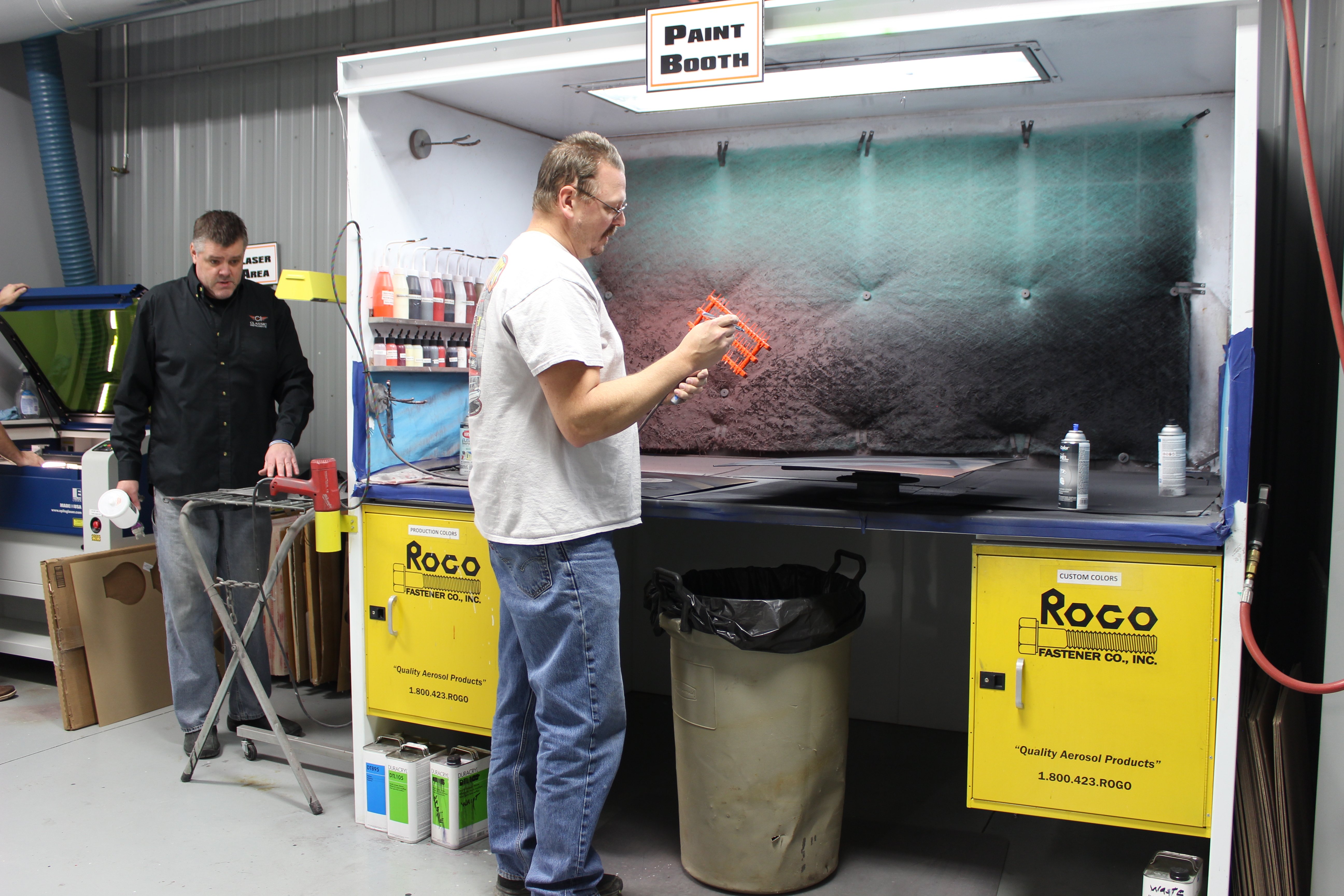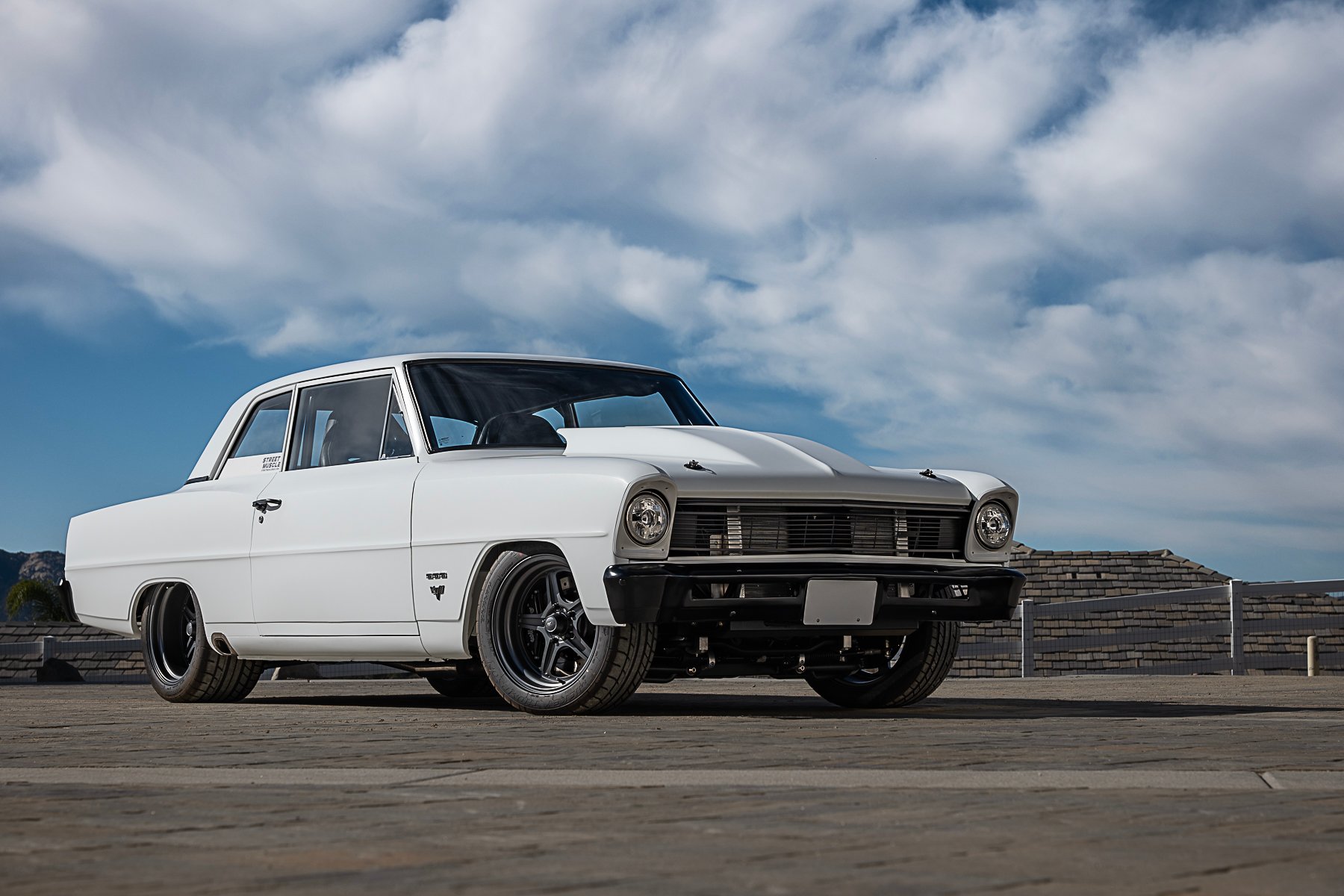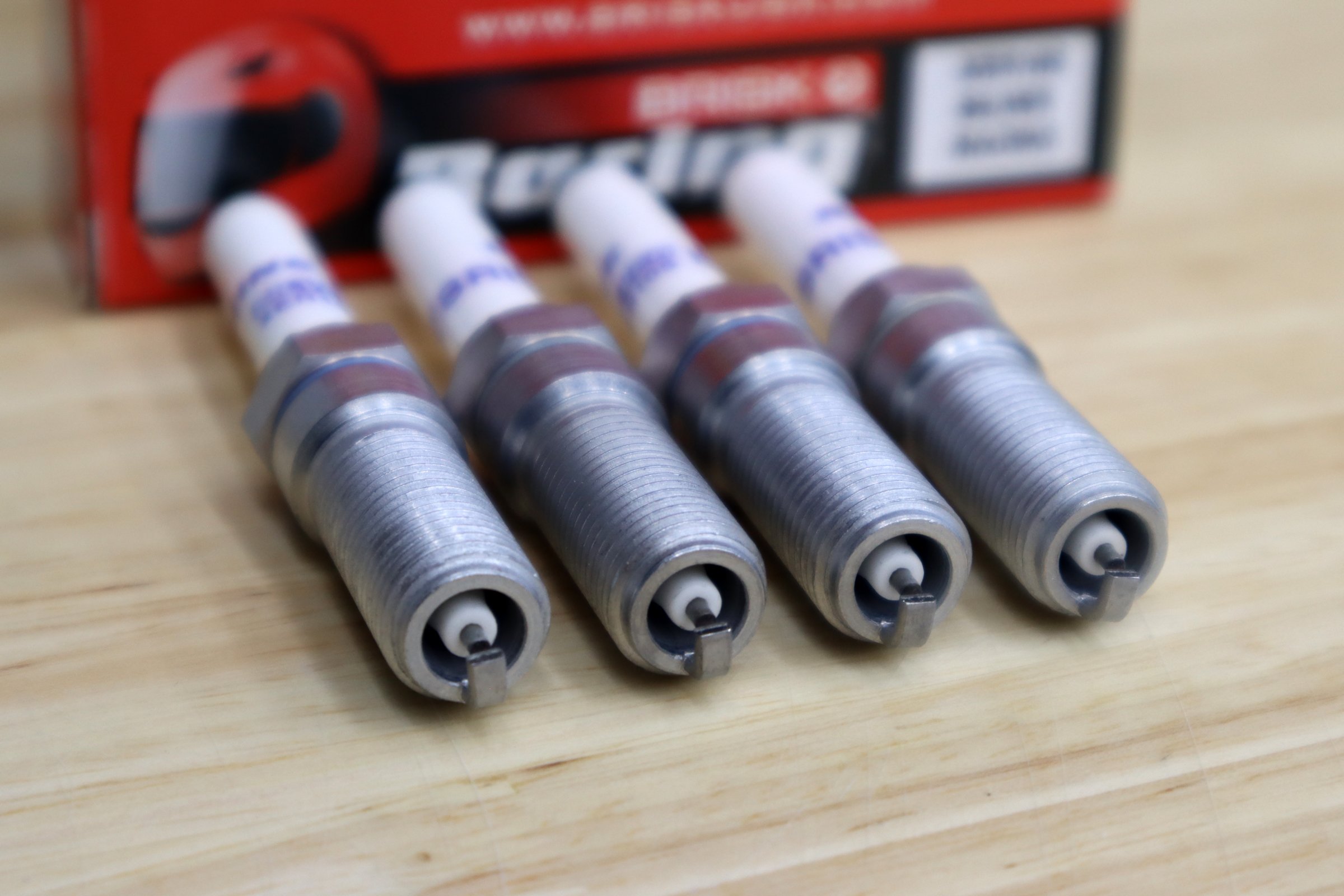The bar seems to move higher each year for high-end custom cars, especially when shooting for The Ridler Award. From top to bottom, painstaking detail is devoted to every conceivable aspect of a top-notch build. And the instrument cluster is not only a prominent, front-and-center, visual-design element for the driver; it’s also what draws in the eye of show attendees.
“If you watch people at a car show, they look at the car, they look at the wheels, and the next thing they do is stick their head in and look at the gauges,” says John McLeod, owner of Classic Instruments, of Boyne City, Michigan. The company, whose motto is “The Finishing Touch,” offers not only vehicle-specific instrument clusters, but also a number of customizable options including a simple color change for the gauge faces, or different pointers. Today’s high-end builder can even commission Classic Instruments to build a one-of-a-kind instrument cluster from scratch.
The customer wants what the customer wants. When we’re building cars at this level, our goal is to give them exactly what they want. — John McLeod, Classic Instruments
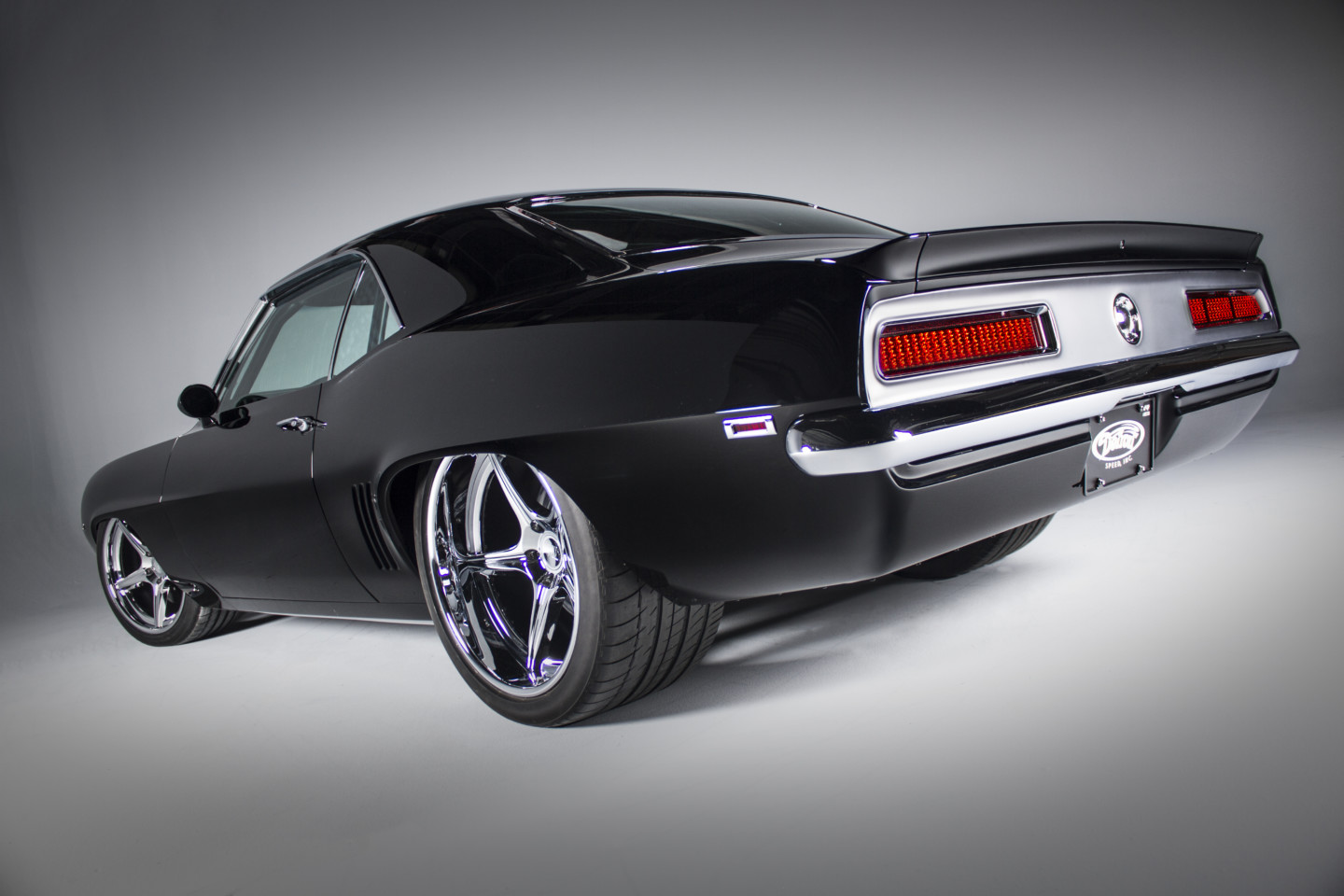
Detroit Speed’s “TUX” ’69 Camaro was one of the Great 8 finalists for the Don Ridler Memorial Award at the 2018 Detroit Autorama. It continued to wow judges the rest of the year. (Photo: Detroit Speed)
How It All Began
It wasn’t too long ago that builders had only a few custom options available to them, McLeod says. They were limited to disassembling gauges and having a t-shirt or print shop print new gauge faces. Classic Instruments has been bringing custom gauge dreams to life since about 2003 when prolific hot rod benefactor/collector, George Poteet, introduced himself to McLeod at the National Street Rod Association (NSRA) Nationals in Louisville.
Poteet asked McLeod to build a custom cluster for the 1940 Ford he was having built by Dave Lane, owner of FastLane Rod Shop in Donahue, Iowa. Although building custom instruments wasn’t a service offered by Classic Instruments at the time, McLeod assured Poteet it would be a task well within the capabilities of his company.
“I didn’t know George Poteet from the Man in the Moon,” he says. “And now, we have a whole department where that [custom gauges] is all we do.”
McLeod said the company’s custom work draws many repeat customers, including Bobby Alloway (Alloway’s Hot Rod Shop), Dave Lane, Detroit Speed, Ringbrothers, Troy Trepanier (Rad Rides by Troy), and George Poteet (who uses multiple builders).
“I think you’ll find that the majority of the major award-winners have Classic Instruments in them.”
Detroit Speed's Kyle Tucker commissioned Classic Instruments to turn his vision into reality for TUX's custom interior, designed to have a "European, high-end" feel. (Photos: Detroit Speed)
Completing TUX’s European Look
One of those winners is the ‘69 Camaro named “TUX,” owned by Stuart Adams. Built over a span of nine years by Detroit Speed of Mooresville, North Carolina, it debuted in 2018 at the Detroit Autorama. There it was a contender for the coveted Don Ridler Memorial Award, making it to the final round known as the Great 8.
Later in the year, TUX continued to stun judges, capturing numerous awards: the Street Machine of the Year award, at the Goodguys Rod and Custom show in Columbus; Street Machine of the Year, at the Triple Crown of Rodding in Pigeon Forge, Tennessee; and capping off the show season by besting more than 300 contenders to win the Battle of the Builders competition at the SEMA Show in Las Vegas.
“Every year, it is so hard to outdo what’s going on in the car-building arena,” says Kyle Tucker, owner of Detroit Speed. The pool of talent is larger than ever, he says, and newer equipment types allow for greater fabrication capabilities. “Between CNC machines, carbon fiber, and 3D-printed parts in both plastic and metal, our ‘toolboxes’ of how we can build a car are now bigger than ever.”
The talented team at Classic Instruments has a variety of high-tech equipment to help them create one-off instrument clusters. Devin, (left) who is the New Product Development/Production Improvements manager, uses a FaroArm to measure an instrument cluster bezel. This precise measuring data will then be imported into SolidWorks, a computer-aided design (CAD) program. Brian (right) works with one of two 3D printers. Other equipment used includes three lasers, a waterjet, and a three-axis mill. (Photos: Classic Instruments)
Turning Vision Into Reality
As Tucker began planning TUX’s interior, about midway through the build, he called upon Classic Instruments to make a custom cluster to not only fit his vision for the car, but also one to be functional and reliable.
“We use John and company at Classic Instruments for all of our high-end builds — and even our regular builds, too,” he says. “They’re great to work with.”
Tucker has built multiple cars for Stuart Adams, a friend of his who gave him and his crew a simple directive — build it in Detroit Speed style with modern performance, and an eloquent look inside and out. “We wanted the outside to look like pure ‘69 Camaro, but very refined, and with many subtle body modifications,” Tucker says. “On the inside, we wanted the car to take on a high-end European, AMG-type feel.”
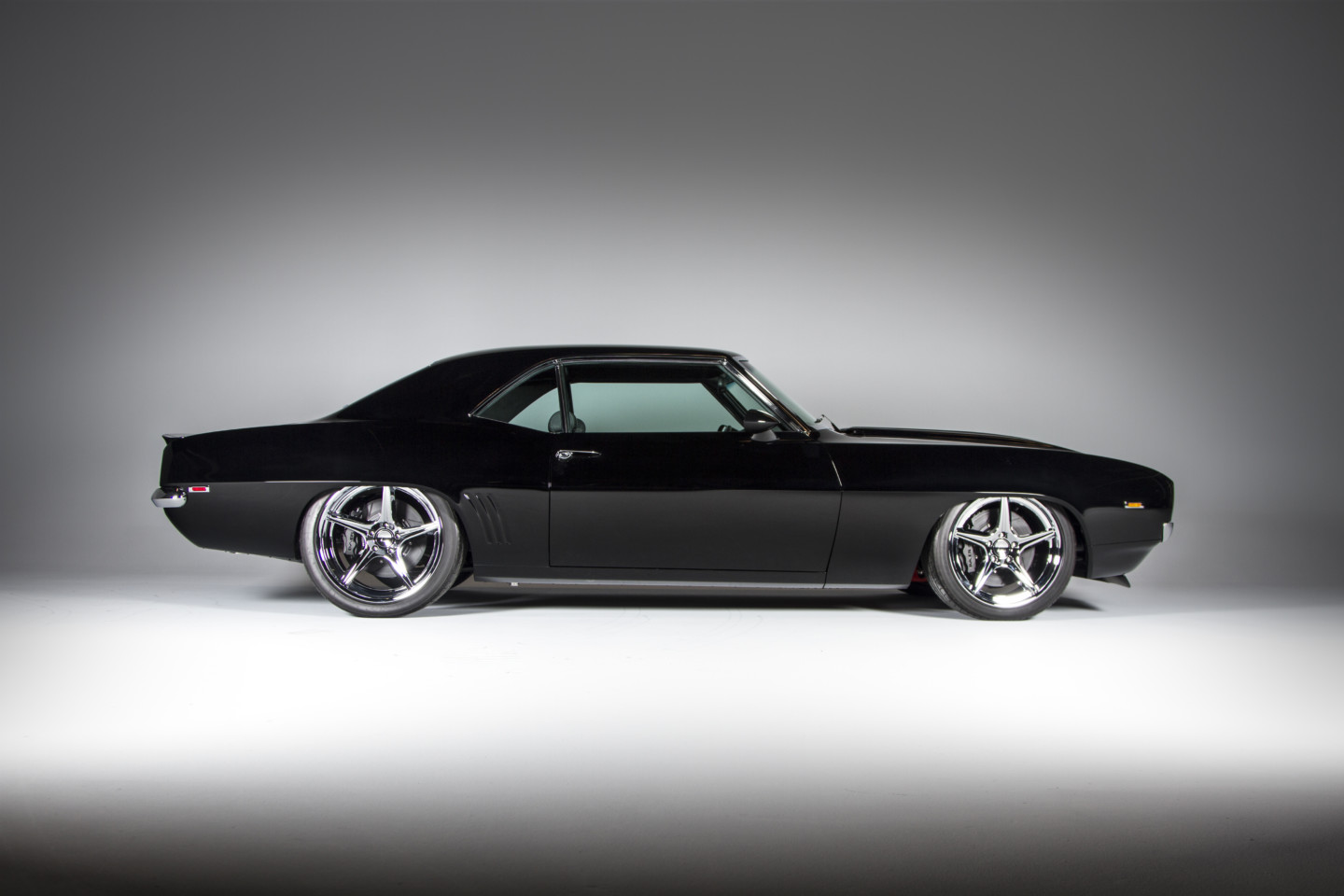
There are so many subtle modifications on TUX that it’s hard to pick them out. (Photo: Detroit Speed)
Detroit Speed set about getting the floor as low as possible while accommodating the driveline and powertrain. The shop built the cowl and dash, while the instrument cluster mounting structure and surround were built to accommodate a Porsche Cayenne instrument cluster bezel. Although he says Adams didn’t give him an open checkbook for the build, it did consume 18,000 man-hours to make the vision a reality. Tucker had some renderings done of the full interior and sent the ideas to McLeod at Classic Instruments, who listened to his wish list and offered solutions.
Retaining Form With Function
The cockpit-style cluster features individual gauges, but to fit the allotted space, all but the tachometer needed to overlap on one edge. Tucker also wanted room for high-beam and turn-signal indicators, as well as icons such as shift, check engine, and brake warning lights. Classic Instruments worked with Detroit Speed to ensure function didn’t take a backseat to form. This included making sure Adams had a full view of the gauges in a normal seating and tilt-steering wheel position.
Function didn't take a backseat to form for TUX's cockpit-style cluster, which is easy to read while driving. It includes neatly incorporated high-beam and turn indicators, as well as icons for the shift, check engine, and brake warning lights. (Photos: Classic Instruments/Detroit Speed)
“Because some of the accessory gauges overlapped and were not in full circles, some of the sweeps were difficult for them to get everything we wanted, as well as the resolution we needed. John screen-printed the graphics on the gauge faces; it’s crazy how much detail he even put into it from his side.”
Tucker and Classic Instruments sweated the details, wanting to make sure the finished cluster ended up looking at home in a high-end European sports car, not a street rod or vintage muscle car. They fine-tuned the look of the icons, the weight and shape of the pointers (even down to the shade of orange paint on them), and the machined-aluminum pivot center. A crosshatch background for the tachometer finished off the package.
“John told me it was the most expensive cluster he had done at the time,” Tucker says, parenthetically noting with a chuckle that it was “also probably his biggest pain in the butt until that point. But we came out of it as friends, just like we started. They went over the top to do it right — not only in how it looks, but that it’s easy to operate.”
Parts for TUX's custom instrument cluster mocked up for assembly into the 3D-printed housing. (Photos: Classic Instruments)
How A Custom Instrument Cluster Is Born
The inspiration for a custom instrument cluster can begin with something as simple as a crayon sketch on a napkin, or as detailed as a rendering from an artist such as Eric Brockmeyer. The company takes care to bring the customer’s vision to life without injecting its own style tastes, guiding where necessary to provide expertise on the capabilities of a gauge, McLeod says.
“One can draw anything, but gauges do have limitations,” he says. “When you start pushing that limitation, that’s where you get into custom circuitry and custom parts, and then the cost can go up. But the customer wants what the customer wants. When we’re building cars at this level, our goal is to give them exactly what they want.”
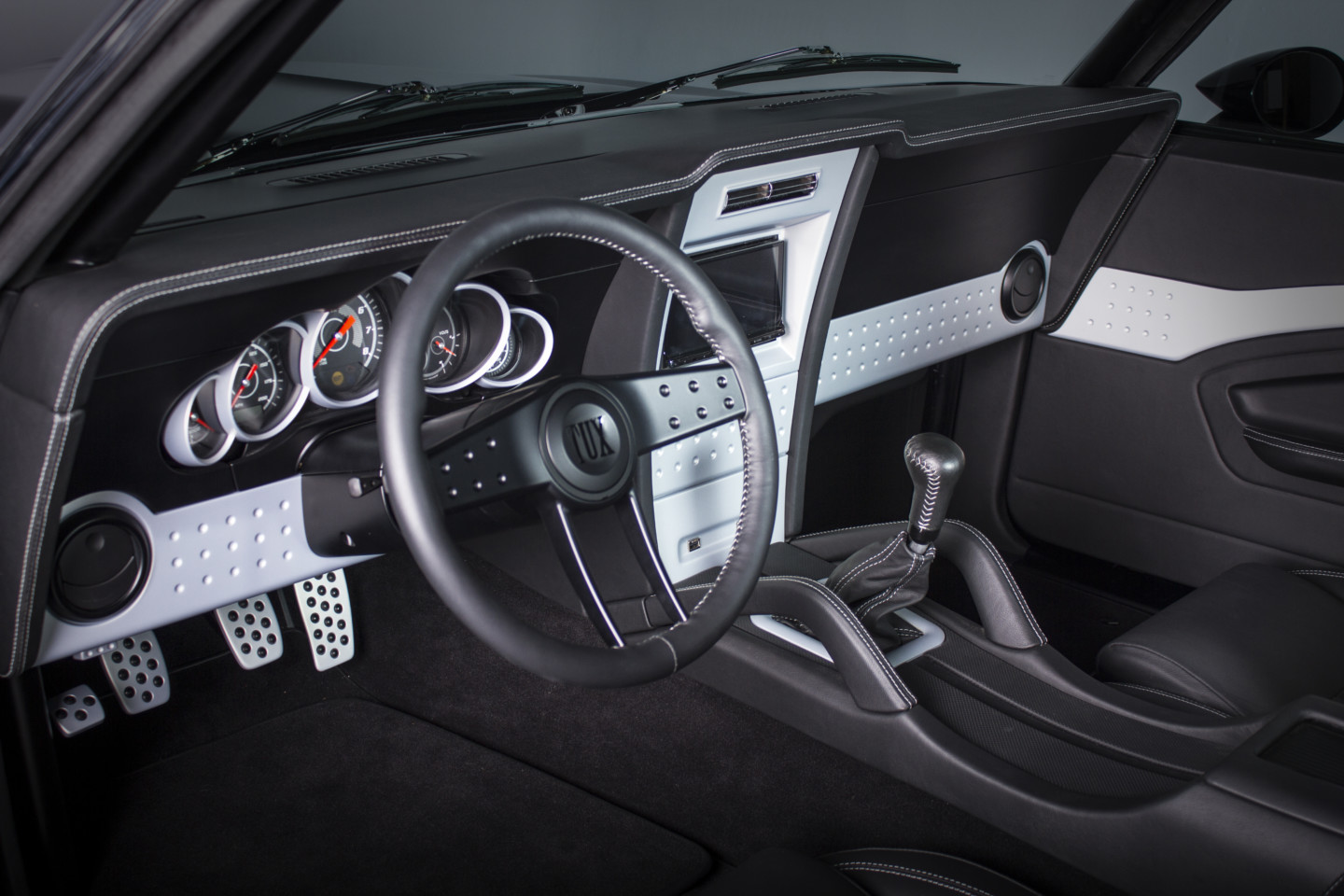
A rendering can only take the vision so far; it is the builder’s job to make it function (Photo: Detroit Speed)
Custom car builds may have a cramped dash, with instruments competing for real estate with components such as the steering column, brake master cylinder, air-conditioning, and more behind the dash. Some instrument cluster designs as received by the builder include gauges with two pointers too close together.
“They can only get so close, because of the physical size of the air-core movement,” McLeod says. “We do make mini ones, and we can get them very close. But, if people want them stacked right next to each other, sometimes the length of a pointer can get cumbersome when you have a long skinny gauge.”
Some fonts cannot be reproduced legibly. And at times, the company has been asked to print logos that would infringe upon trademarks, so those are refused.
Working with the drawing or rendering, the company’s designers, builders, and graphics team collaborate on the requirements of the job. The team collects basic information on the build’s planned engine, transmission, fuel-sending unit and ohm range, and wiring specifics — such as if it will be carbureted or fuel-injected, or if it needs an ECU or transmission controller.
Classic Instruments has the equipment to help it reproduce intricate shapes, including a FaroArm for precisely measuring data. This can be imported into a SolidWorks computer-aided design (CAD) program to use on one of its two 3D printers, three lasers, a waterjet, or a three-axis mill.
Parts for TUX were designed using SolidWorks. The housing (left) and light chamber (right) were then printed using a 3D printer, and the gauge surround was machined from aluminum. (Photos: Classic Instruments)
If work from an outside supplier is required, those are added to the final quote. These can include such things as chrome-plating from Advanced Plating, or five-axis CNC machining from EVOD Industries or Greening Auto Company. Depending on the complexity, it can take as little as a couple of days for a simple project, to one to two weeks. If desired, the customer can get a quote down to the penny. Once the project and cost are agreed upon, production begins with a 50-percent deposit, with the balance due on the day of shipping.
Seeing The Project Through From Start To Finish
“There is a lot of communication with the customer in the midst of it,” McLeod says. “Obviously, deadlines are very important. We meet those at all costs. If I have to work this entire company around the clock the last week [of a build] because we made a promise, then that’s what we do. Our whole team is dedicated to that. Obviously, we try not to do it because our expense goes up, and we have a guaranteed cost to the customer. But the customer knows it doesn’t matter what I have to do on my side. I promised them a gauge; if he didn’t make a change, I have to deliver at that number and at that time.”
In between design conception and the car builder receiving the completed project, multiple CAD drawings and photographs of each element are often sent to the customer by request. Once it’s complete, a custom wiring harness, instruction sheet, and calibration sheet are packaged with the cluster.
TUX's 3D-printed housing and custom wiring harness are typical of those built for all Classic Instruments custom clusters. (Photos: Classic Instruments)
“Packaging can be very unique in how that’s done,” McLeod says. “Certain very special gauges on real high-end cars will get special shipping. It used to be that all of our high-end gauges got a wooden crate that was handmade by my father. He unexpectedly passed away last year, so we kind of slowed down on the boxes. But, last year, each box for the Triple Crown of Rodding awards, we made them at my father’s workshop with the help from the team here.”
Service doesn’t end after the sale, McLeod says, with Classic tracking the shipment and following up with the builder. “We’re kind of married to the job until it gets to the show.”
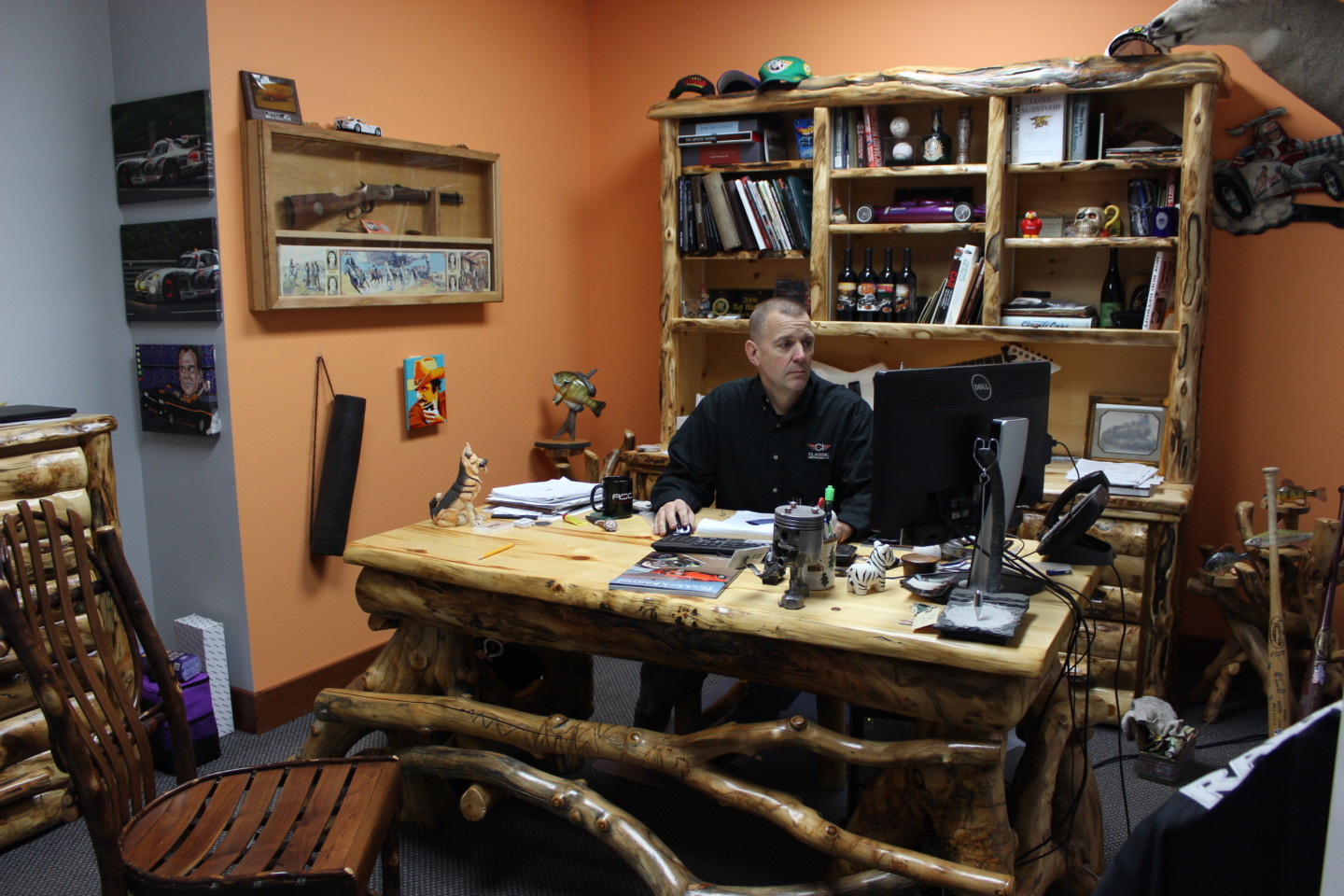
John McLeod, president of Classic Instruments, heads up a talented team of employees who can take a dream of a custom instrument cluster and make it a reality. His late-father’s woodworking abilities are evident in his office. (Photo: Classic Instruments)
Creations By Gemza Goes For The 2020 Ridler With Its ‘Cuda
Creations by Gemza, in Charlotte, North Carolina, is known more for its original equipment-correct Mopar restorations. But, when Owner Tony Gemza got an opportunity to build a custom ‘Cuda, he jumped at the chance. It will be gunning for the Ridler upon its debut at the 2020 Detroit Autorama, Feb. 28-30. At the time of this writing, it is still cloaked in secrecy, as the Ridler rules dictate no photos can be shown of the car before the unveiling at the show.
“This is a perfect opportunity to show the world what we can do to customize a car and not just bring it back to OE specs,” Gemza says. “Just the idea of competing for the Ridler is overwhelming because things can’t be perfect enough. It’s stressful, but it’s fun at the same time because as a car builder, it’s fun to be challenged.”
The six-year project started with a six-cylinder Barracuda body, modified with a 1-3/8-inch wedge cut between the A-pillar and quarter panel. It’s draped over an Art Morrison chassis.
“A factory ‘Cuda is a beautiful car, but they’re a little pudgy in the sides, in my opinion. So we took that out of it. We also altered the wheelbase three inches in the front to get rid of the front fender overhang, which gave the car a lot more aggressive approach.”
No panel on the car has been untouched, and as high as the chassis is in the body, the dash needed to be cut and chopped to fit, especially to make more legroom for the long-legged owner.
“Once we had the steering column in place, we were able to figure out what size the dash could be. We started on a piece of cardboard template the size of what fit in the space we had. We drew what we thought would be cool for gauges: oil, temperature, volts, temp, and boost, and I sketched it out on paper.”
McLeod and other Classic Instruments staff used Gemza’s drawing to help him hammer out the details of the final design, revising the layout of the gauges and indicators several times to be more eye-pleasing. The shape of the cluster followed the car’s theme beginning with custom-built Budnik wheels, which incorporate a kidney shape. That shape was echoed in the exhaust tip and the heat extractor vents at the rear of the hood. So, it was natural to continue the theme in the instrument cluster.
Mark and Chuck (left) prepare a set of pointers for Brian to paint. A wide variety of either production or custom colors is available. (Photos: Classic Instruments)
Making Everything Fit – And Pleasing To The Eye
Gemza was concerned about keeping symmetry while incorporating features such as a boost gauge for the supercharged late-model Hemi, and a shift light in the tachometer. The Classic staff was helpful in placing the boost gauge in the center at the top and to offset the tach-mounted shift light. Meanwhile, the high-beam indicator was placed in the speedometer.
“They’re chock-full of good ideas. And they’re easy to talk to. So, when you start talking in circles or just talking in general about how to do something, they kind of get where you’re coming from. Then, they think about it and get back to you with their ideas. A lot of this is kind of like bench-racing; it’s guys sitting around talking about how cool something would be. But to actually create it — that’s a whole different level,” Gemza says.
After a series of back-and-forth emails, Gemza received a piece of plexiglass in the shape of the final product, laser-etched with the location of all of the gauges. That allowed Gemza to invite the owner over to try the cluster on for size after the dash, seat, and floor-mounted Tilton pedals were mocked up. He was able to make sure the owner was happy with it, and all the measurements were spot-on. After years of checking out the time-consuming bodywork in bare steel, the mock-up was at a point in the build where they could better envision how the car was coming together.
“When you finally get this thing painted, and you start showing him the dash and other features, it puts a smile on his face. It’s really cool. Because, we car builders — and companies like Classic Instruments — we have the vision of, ‘Hey, this is what we want to do.’ The owner of this ‘Cuda doesn’t necessarily have that vision. That’s why he hired us to build this car.”
It was never in question that Gemza would choose Classic Instruments to help bring that vision to life, he says. “To me, they’re the leader in custom dashes. I knew this thing was going to be gorgeous and it’s going to be perfect.”
Look for the ‘Cuda to be unveiled in Detroit. Be sure to check out the custom gauge cluster from Classic Instruments, now that you know the backstory on what it takes to build a one-of-a-kind product built right here in the USA by skilled craftsmen.
A lot of this is kind of like bench-racing; it’s guys sitting around talking about how cool something would be. But to actually create it — that’s a whole different level. — Tony Gemza

